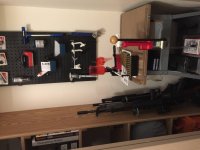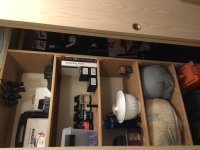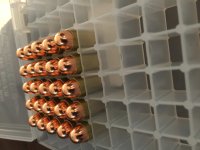MarkGlazer
New member
Everyone has their own way of doing things and you can see by the responses on this board, well, the list can go on forever. So, here's my 2 cents; stop buying stuff. When your manual arrives, read it, more than once. The suggestion to review u-tube videos is a very good one, as many as you can. Lee also has it's own videos to teach you how to use their equipment, check out their site. The instructions that accompany the kit you purchased is more than adequate as well, in terms of set up. If you happen to have a friend or two who load, go hang out with them and see what their processes are. If not, see if your range offers re-loading classes, if not, check out the NRAs' website for classes that might be in your area.
At this stage of the game you need to master "process" and "safety." Do not rush into or through anything that you will be doing. You need to understand that loading takes time and care in order to have success and safety before you hit the firing line. When you decide to add a rifle to your repertoire, your time at the bench will extend further and will require even more attention to detail and time spent in preparation. As you gain experience it will come to you what part of your equipment inventory you like and what part is a pain that you wish to do away with. Search TFL on your topic and see what others have done, what they like and don't, which will save you money in the long run. Do your research before you make your next purchase. You have the basics and they will get you in the door. What you spend next will simply help you refine your process and increase your comfort zone. A simple example; that beam scale that comes with the kit, same as the one that came with mine 3 years ago and it's the only one I have. I'm happy with it because it works and I can see no reason to spend money on something different, i.e. I can spend my money on something else I really want or need.
Ask as many questions as you wish. Search the TFL when you have questions as many have already been answered. The people who occupy this space are fantastic. There is never a dumb question with the people here, except the question that isn't asked, but should have.
Take care. Good luck. Take your time and above all, be safe.
At this stage of the game you need to master "process" and "safety." Do not rush into or through anything that you will be doing. You need to understand that loading takes time and care in order to have success and safety before you hit the firing line. When you decide to add a rifle to your repertoire, your time at the bench will extend further and will require even more attention to detail and time spent in preparation. As you gain experience it will come to you what part of your equipment inventory you like and what part is a pain that you wish to do away with. Search TFL on your topic and see what others have done, what they like and don't, which will save you money in the long run. Do your research before you make your next purchase. You have the basics and they will get you in the door. What you spend next will simply help you refine your process and increase your comfort zone. A simple example; that beam scale that comes with the kit, same as the one that came with mine 3 years ago and it's the only one I have. I'm happy with it because it works and I can see no reason to spend money on something different, i.e. I can spend my money on something else I really want or need.
Ask as many questions as you wish. Search the TFL when you have questions as many have already been answered. The people who occupy this space are fantastic. There is never a dumb question with the people here, except the question that isn't asked, but should have.
Take care. Good luck. Take your time and above all, be safe.




